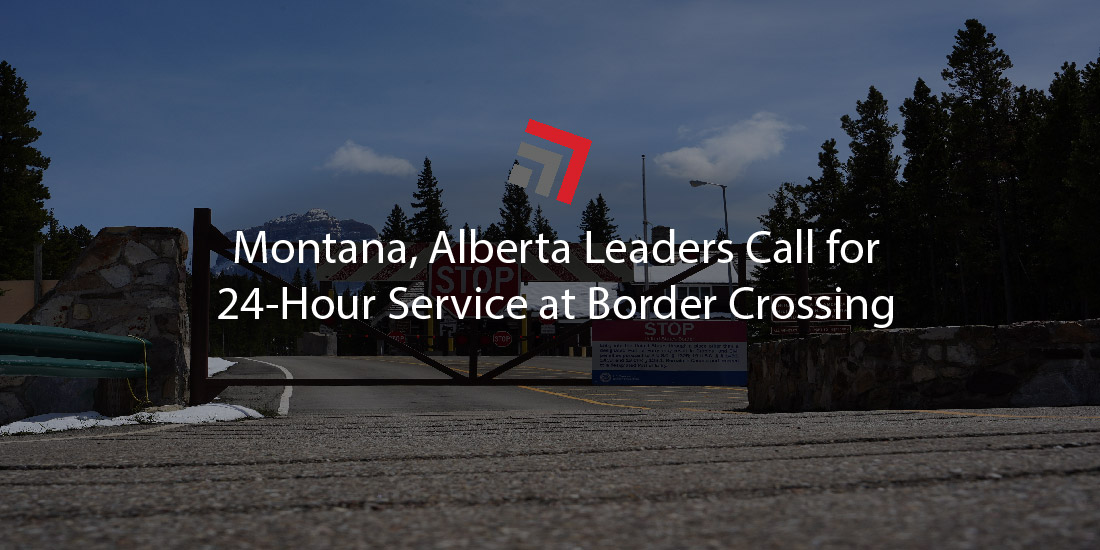A joint letter from government leaders to President Joe Biden and Prime Minister Justin Trudeau calls for 24-hour service at Montana’s Wild Horse border crossing into Canada.
Montana Governor Greg Gianforte and Alberta Premier (head of the province) Danielle Smith are proposing the measure as a means to expedite freight movement between the two intimate trade partners.
“Due to limited hours of service and deficiency of facilities and infrastructure, the Wild Horse crossing serves as a primary bottleneck, constraining north-south traffic and trade,” the leaders wrote in their letter.
Gianforte and Smith assert this bottleneck results in shippers missing delivery windows or being tasked with transiting across alternative, more costly, routes.
One of America’s largest states, Montana shares six border crossing facilities with its northern neighbor, the Canadian province of Alberta. Of these however, only one—Sweetgrass-Coutts—is open for 24 hours.
Located in Havre, Montana on U.S. Highway 232, the Wild Horse Port of Entry is far from possessing this ideal capability. The crossing operates like most commercial businesses do—Monday through Friday, from 8 a.m. to 5 p.m.
Gianforte and Smith contend that extending the crossing’s hours would address outstanding supply chain challenges that stem from a capacity crunch to move freight across.
“It would be a crucial link in the Eastern Alberta and Central Montana trade corridor,” they wrote. “Commercial traffic moving to and from the central, southeast, and northeast U.S. would also achieve substantial cost savings by transiting through a [24-hour service] Wild Horse border crossing.”
The two leaders put a number on the crossing’s important with trade figures. Montana’s trade last year with Canada tallied $10.7 billion and overall U.S. trade with Alberta blossomed to $160.4 billion.
In conclusion, Gianforte and Smith laid out a call to action: “We recommend the two federal governments [U.S. and Canada] work together to expend the Wild Horse Port of Entry to a 24-hour border crossing, with greater capacity to accept commercial traffic.”
Montana and Canada have a rich trade relationship
Montana shares a vast 545-mile border with Canada and three of its provinces—Alberta, British Columbia, and Saskatchewan.
With next-door access, Canada is Montana’s largest receiver of the state’s exports, per the state’s transportation department. Coal, agriculture products, and minerals are among the top commodities moved northbound.
In return, Canada makes up nearly all of Montana’s imports, including crude, coal byproducts, wood, vehicles, and electronics.
Final Thoughts
Altogether, U.S.-Canada trade was valued at $1 trillion in 2021. Who says you can’t put a price tag on friendship?
The two countries continue to be top trading partners with one another so any concerns relayed from stakeholders are likely to hit the desks of President Biden and Prime Minister Trudeau.
Please contact us if you have any questions regarding this topic or any others in cross-border logistics. In addition, stay up to date with weekly headlines from both trucking and rail via our Road Map newsletter.
More blogs similar to this:



Recent Comments